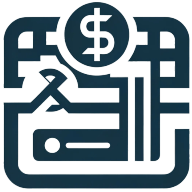4 Payroll Integration Strategies for Successful Mergers Or Acquisitions
Mergers and acquisitions often present complex challenges, particularly when it comes to integrating payroll systems. This article delves into essential strategies for successful payroll integration during these corporate transitions. Drawing insights from industry experts, it offers practical approaches to streamline the process and ensure a smooth transition for all parties involved.
- Prioritize Earnings Codes in Payroll Integration
- Centralize Communication for Seamless Payroll Transition
- Implement Dual Systems During Payroll Alignment
- Audit Early to Harmonize Critical Pay Elements
Prioritize Earnings Codes in Payroll Integration
M&As can get messy, and we often think it has to do with the policies. While the mergers and transition to new company's policies are a hurdle, it is what is on the backend of those policies which can cause chaos - the earnings codes!
Payroll & finance systems use software to help process payroll and post general ledgers, which rely on earnings codes. These codes hold information like how the rate is calculated, if the earning is taxable, can contribute to 401k, and accrues time off.
I consulted for a manufacturing company that was undergoing a new system implementation while doing continuous acquisitions. We learned the hard way that we could not have an acquired company have payroll processed immediately in the parent company's system with the same earnings codes. When we did, it resulted in some employees getting double time instead of time and a half, and retirements being underfunded.
A few years later, the VP of the manufacturing company asked me to consult for his new company undergoing the same type of M&A. This time we were strategic. Every time a new company was acquired, we weighed the pros and cons of creating new earnings codes specific to the acquisition or changing the policies to fit the parent company's pay structure. This time, it was much smoother.
Pay attention to earnings codes!

Centralize Communication for Seamless Payroll Transition
One thing I've learned from being in the trenches during M&A deals is that payroll can't be an afterthought—it's personal, immediate, and if it goes wrong, trust erodes fast. My top tip? Start early and centralize communication. Even before the ink dries, have a joint task force in place with clear roles from both sides.
I remember working with a growth-stage fintech where we integrated their payroll with a larger acquiring company's system—seamlessly, but only because we insisted on a full audit of both payroll structures, tax obligations, and benefits up front.
What made it work was aligning pay dates, normalizing salary structures where feasible, and clearly communicating changes to employees with concrete timelines. One of our team members even ran weekly office hours during the transition to address concerns, which, frankly, saved us from unnecessary churn.
It wasn't glamorous, but it built trust. At Spectup, we always push for simplicity in execution and overcommunication in change—because when people get paid on time and correctly, everything else gets a bit easier.

Implement Dual Systems During Payroll Alignment
I had to manage payroll across two driver fleets—each with its own contracts, currencies, and expectations—48 hours after merging with a smaller operator in the outskirts of Mexico City. What saved us was radical transparency.
When I acquired a boutique private driver service focused on airport transfers in Santa Fe, I didn't just inherit cars—I inherited people with deep local knowledge, legacy pay structures, and a totally different rhythm of work. We were still operating under my brand, Mexico-City-Private-Driver.com, but I made it clear from day one: "We'll honor what's fair, adapt what's outdated, and align fast."
My top tip? Run dual payroll systems for the first 30 days while aligning expectations weekly. This gave both old and new teams psychological safety while we transitioned to unified pay schedules, bonuses for on-time arrivals, and tip pooling policies. I personally reviewed 37 individual pay records to ensure no one felt shortchanged.
The result? Zero attrition. In fact, we grew bookings 18% within the first month post-integration—because the drivers talked to each other, respected the new process, and kept showing up sharp. That only happens when payroll is handled with empathy, speed, and surgical clarity.
Audit Early to Harmonize Critical Pay Elements
Payroll integration during mergers mirrors what we see in Direct Primary Care (DPC) practice transitions—transparency and communication prevent chaos. Start by auditing both systems early, identifying discrepancies in benefits, pay scales, and reporting structures before day one. Create a unified timeline with clear milestones, just like when DPC practices merge patient panels. The key is maintaining employee trust through consistent communication about changes, similar to how we keep patients informed during practice transitions. I've seen successful integrations where leadership addressed concerns weekly, preventing the talent exodus that kills merger value. Focus on harmonizing the most critical elements first—base pay, core benefits, and compliance requirements. That's how care is brought back to patients.



